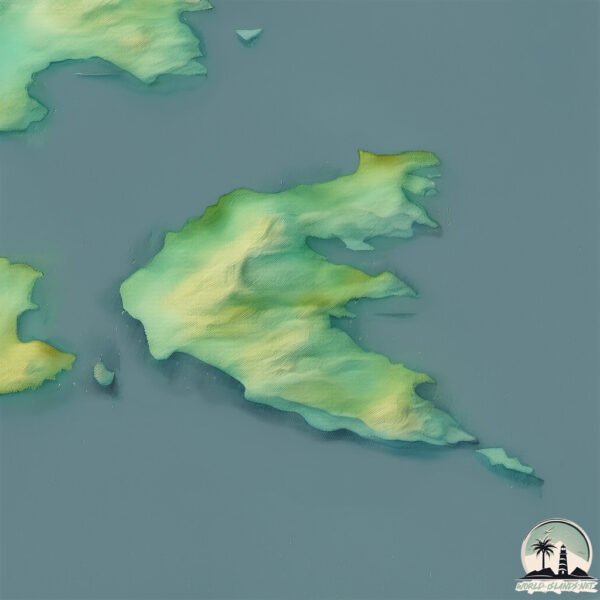Welcome to Deceit , a Polar island in the South Atlantic Ocean, part of the majestic Atlantic Ocean. This guide offers a comprehensive overview of what makes Deceit unique – from its geography and climate to its population, infrastructure, and beyond. Dive into the details:
Geography and size of Deceit
Size: 36.8 km²Coastline: 54.2 kmOcean: Atlantic OceanSea: South Atlantic OceanContinent: South America
Deceit is a Medium Island spanning 37 km² with a coastline of 54 km.
Archipel: –
Tectonic Plate: Scotia – Situated in the Southern Ocean, surrounding the Scotia Sea, between South America and Antarctica, known for the Scotia Arc and active seismicity.
The geographic heart of the island is pinpointed at these coordinates:
Climate and weather of Deceit
Climate Zone: PolarClimate Details: TundraTemperature: Cold
Climate Characteristics: The tundra climate features long, extremely cold winters and short, cool summers. Vegetation is limited to mosses, lichens, and small shrubs due to the low temperatures and short growing seasons. Biodiversity is low, but some specialized species thrive.
Topography and nature of Deceit
Timezone: UTC-04:00Timezone places: America/La_PazMax. Elevation: 323 m Mean Elevation: 138 mVegetation: Evergreen Broadleaf ForestTree Coverage: 52%
The mean elevation is 138 m. The highest elevation on the island reaches approximately 323 meters above sea level. The island is characterized by Hills: Gently sloping landforms with rounded tops, having a maximum elevation between 200 and 500 meters. Hills contribute to a varied landscape on islands.
Dominating Vegetation: Evergreen Broadleaf Forest
Vegetation: 10 vegetation zones – Very Highly Diverse Island
Infrastructure and Travelling to Deceit
Does the island have a public airport? no .
Does the island have a major port? no .
The mean population of Deceit is 0 per km². Deceit is Uninhabited. The island belongs to Chile .
Continuing your journey, Freycinet is the next notable island, situated merely km away.
Skolvivor Season 10: Deceit Island II Intro
Just a little fun thing I make every season for my Discord Survivor Game, Enjoy!!
Skolvivor Season 10: Deceit Island II Intro
Just a little fun thing I make every season for my Discord Survivor ...
Just a little fun thing I make every season for my Discord Survivor Game, Enjoy!!
I do not own any audio in this video If you are ...
Skolvivor S3: Deceit Island Intro
I do not own any audio in this video. Just made it for my Survivor Org ...
I do not own any audio in this video. Just made it for my Survivor Org on Discord XD.
Deceit Island - The impossibly frustrating platformer
PLAY NOW FOR FREE: ...
Chile is classified as Emerging region: G20: Group of Twenty – Major economies comprising both developed and emerging countries, representing the world’s largest economies. The level of income is Upper middle income.
News – Latest Updates and Headlines from Deceit
Stay informed with the most recent news and important headlines from Deceit. Here’s a roundup of the latest developments.
Loading...
Please note: The data used here has been primarily extracted from satellite readings. Deviations from exact values may occur, particularly regarding the height of elevations and population density. Land area and coastline measurements refer to average values at mean high tide.

